
Slipper Spring Trailer Suspension System Review

Slipper Spring Trailer Suspension Components
Hangers Leaf springs Equalizers Spring seats Suspension bolts U-Bolts/U-bolt plates
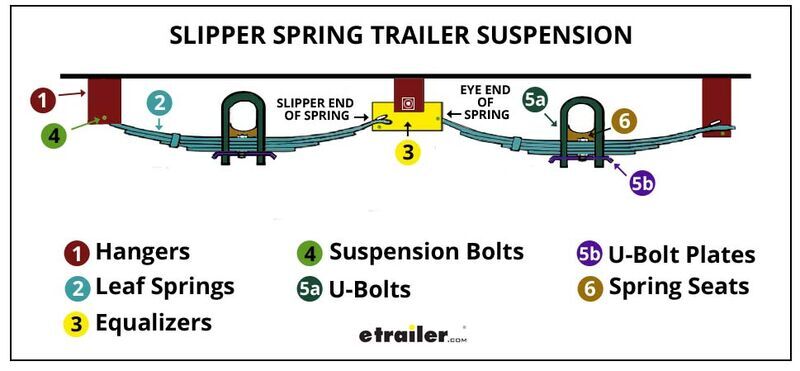
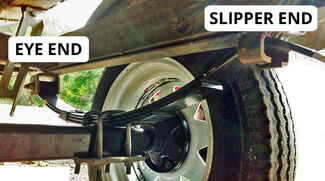
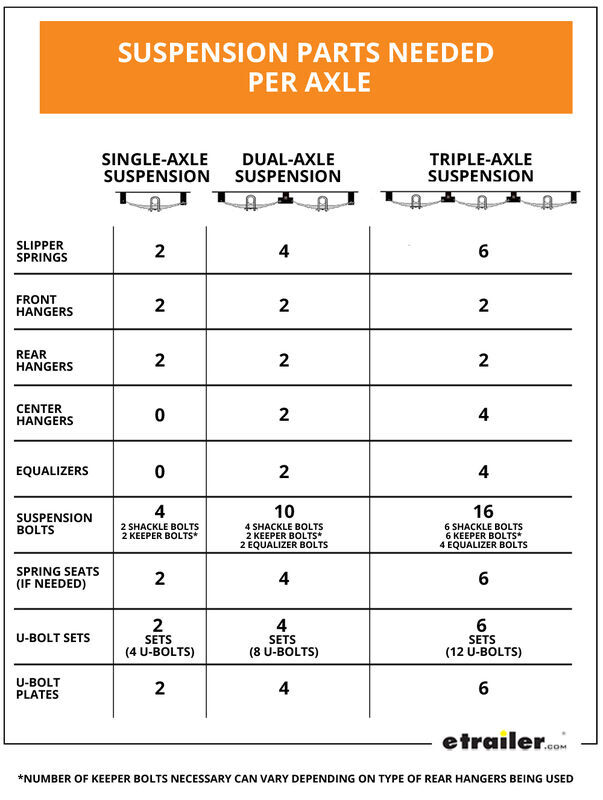
Hangers

1-3/4" (axles 1,000 - 3,500 lbs) 2" (axles 3,500 - 9,000 lbs) 2-1/2" (axles 9,000 - 12,000 lbs) 3" (axles 10,000 - 12,000 lbs)
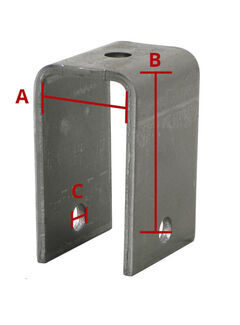
Leaf Springs

Cracked Broken Extremely rusty Overly worn and sagging You are upgrading the axle to a greater weight capacity
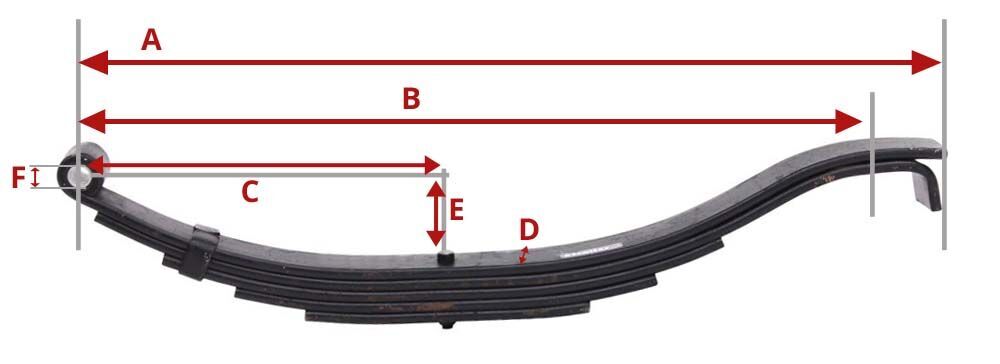
Equalizers

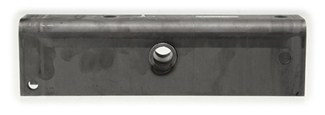
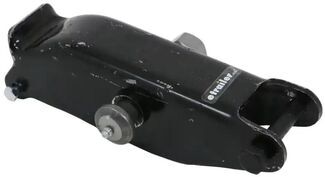
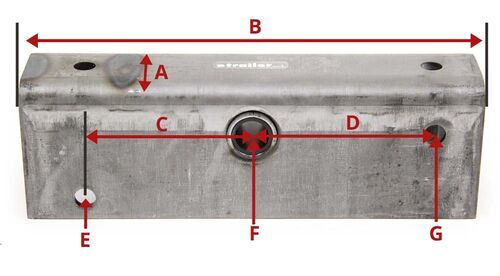
Suspension Bolts

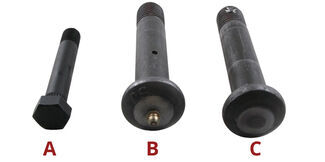
Regular shackle bolts (A) - For use between springs/hangers and between slippers/hangers Wet shackle bolts (B) - Have zerk fittings that allow grease to be injected, which assists movement and halts corrosion. Can be used anywhere in system as long as bolt is appropriate size (eyes with bushing often do not need wet bolts) Equalizer bolts (C) - Suspend equalizers
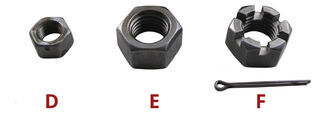
Regular nut (D) - Standard nut; reusable Lock nut (E) - Has mismatched threads to ensure nut cannot twist off bolt; one-time use Castle nut (F) - Looks like castle wall; includes cotter pin, which threads through small hole at threaded end of bolt (ensures nut cannot come off bolt); most often used on equalizers of systems with high weight capacities

U-Bolts and U-Bolt Plates
Torque ratings: 1/2" bolts: 45 ft/lbs - 70 ft/lbs 9/16" bolts: 65 ft/lbs - 95 ft/lbs 5/8" bolts: 100 ft/lbs - 120 ft/lbs

Rusted Stretched Bent Show stress cracks or worn spots Show other significant signs of wear
1,000-lb - 2,000-lb Axles: 1-1/2" - 1-3/4" diameter 3,500-lb Axles: 2-3/8" diameter (can have a 3-1/2" diameter, but rarely) 6,000-lb - 7,200-lb Axles: 3" diameter 8,000-lb Axles: 3-1/2" diameter 9,000-lb Axles: 4" diameter 10,000+ lb axles: 5" diameter
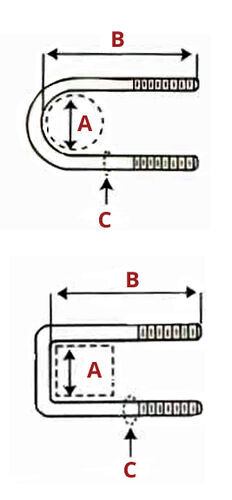
Spring Seats

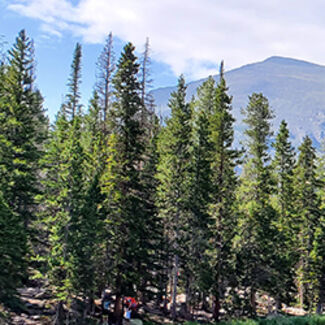
Dawn K.
10/31/2022
Thank you for mentioning what information and measurements are needed to replace U-bolts for your trailer. I want to go snowmobiling with my family this fall. I will find a great snowmobile trailer first for us.
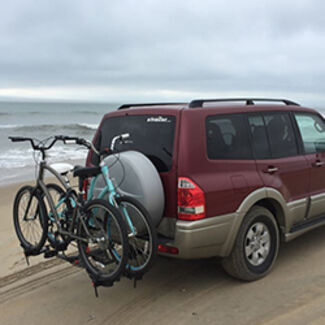
Mario B.
8/15/2022
I have a 2016 infinity car hauler trailer with Dexter 15k slipper spring set up. A few months ago one of the original front axle leaf springs broke near the bolt eye. My local trailer supply checked Dexter parts catalog for replacement part #072-045-01.I replaced left and right front axle springs and after a short trip the new leaf spring broke right below bolt eye. Long story short,i have since broken 4 leaf springs on the front axle. Front hangers. Equalizers and rear springs bushings are good. Now according to dexter parts catalog, there is only 1 15k leaf part# to choose from, looking at your site, you list 2 15k leaf springs with flat end and radius end. The leaf springs with dexter part are flat end. I did not look at the original springs that were replaced, but judging from the rear axle leaf they appear to have a radius end. Could this be a case of bad quality or batch and i just happened to get all 4 springs the shop had in stock, or my tandem Dexter kit requires radius leaf and by installing flat ends on the front its binding/and or stressing the front leaf under load. Thank you



Douglas S.
7/31/2020
i have a karavan dual axle pontoon trailer mid size 400 miles on it we have to land the toon all the time lately we have alot of noise in suspension when on ruff roads or going over speed bumps could it be the spring inside the slipper equalizer

Departments
Towing
- Trailer Hitch
- Fifth Wheel
- Gooseneck
- Towing a Vehicle
- Front Hitch
- RV Hitch
- ATV Hitch
- HD Truck Hitch
- Vehicle Wiring
- Brake Controller
- Ball Mounts
- Weight Distribution
Sports and Recreation
Trailer Parts
- Utility Trailer
- Boat Trailer
- Landscape Trailer
- Enclosed Trailer
- 5th/Camper Trailer
- Car Hauler
- Horse Trailer
Vehicle
Contact & Help

What our customers are saying:
"I like the easy of navigation through the site. It only took me a couple of minutes to place my order. Thank You I will shop this sight again in the future."
Popular Vehicles
- Subaru Forester
- Ford F-350 Super Duty
- Ford F-250 Super Duty
- Chevrolet Silverado 1500
- Jeep Wrangler Unlimited
- Jeep Wrangler
- Ram 3500
- Toyota Highlander
- Ram 2500
- Chevrolet Silverado 2500
- Subaru Outback Wagon
- Chevrolet Silverado
- Dodge Ram Pickup
- GMC Sierra 2500
- Ram 1500
- Ford F-250 and F-350 Super Duty
- Jeep Grand Cherokee
- Toyota Tacoma
- GMC Sierra 3500
- Toyota Tundra
- Ford Escape
- More >>


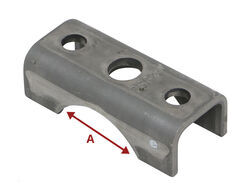
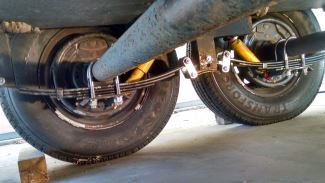
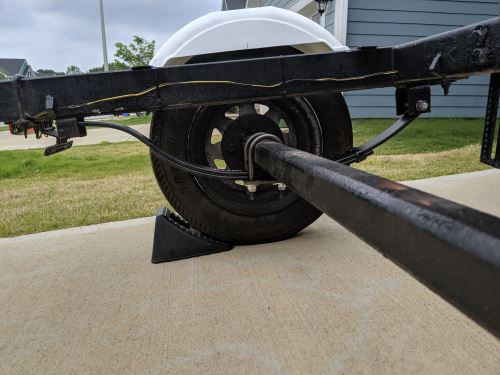
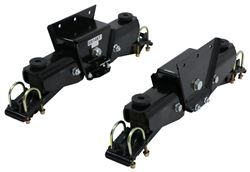

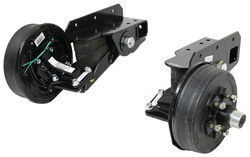


























Alex
10/27/2023
I have a dump trailer with 7k Dexter axles and slipper springs. What would cause the rear axle U-bolts to hit the frame? The trailer can be unloaded and level, and the U bolts still hit the frame.